Trivia Browser
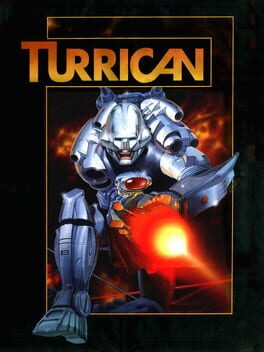
▲
2
▼
In the Commodore 64 version of the game, there are two known messages written with destroyable blocks that are hidden out-of-bounds in two levels of the game. In Level 1-1, the year "1989", referring to the year the game began development, can be found in the middle of the map. The other message is hidden in Level 1-3, where the letters "DTE" can be found in the middle of a land mass in the bottom-right corner of the map.
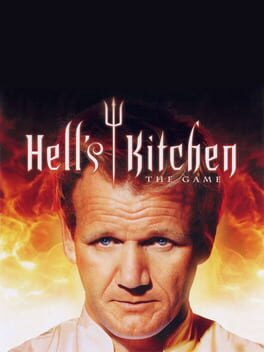
▲
2
▼
Hell's Kitchen censors the profanity that made its source material famous - developer Ludia temporarily provided a more vulgar version of the PC game on its website as a limited time release, which was timed to be taken down following the finale of Season 4.
Article about the uncensored version:
https://www.gamezebo.com/news/hells-kitchen-uncensored/
Review mentioning the censorship:
https://www.gamesradar.com/hells-kitchen-the-video-game-review/
https://www.gamezebo.com/news/hells-kitchen-uncensored/
Review mentioning the censorship:
https://www.gamesradar.com/hells-kitchen-the-video-game-review/

subdirectory_arrow_right Mario Bros. (Game)
▲
2
▼
Mario Bros. was intentionally designed to be less graphically intensive than other games coming out at the same point so its Famicom conversion would seem more authentic to the arcade version.
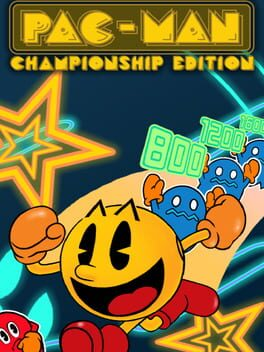
subdirectory_arrow_right Namco Museum Archives Volume 1 (Game)
▲
2
▼
The NES demake of Pac-Man Championship Edition, featured in 2020's Namco Museum Archives Volume 1, was originally created as an unauthorized fan project by homebrew developer coke774 in 2008.
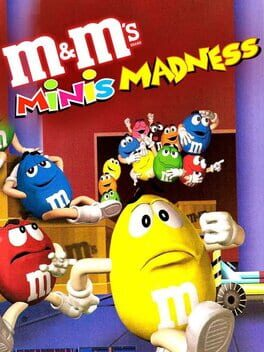
▲
2
▼
M&M's Minis Madness had a one-level demo for personal computers released on the M&M's official website which used a proprietary emulator. It does not feature the opening cutscene.
https://www.gamezone.com/news/m_amp_m_s_mini_madness_gbc_demo_on_pc/
The Demo ROM has been preserved and can be found on piracy websites
The Demo ROM has been preserved and can be found on piracy websites
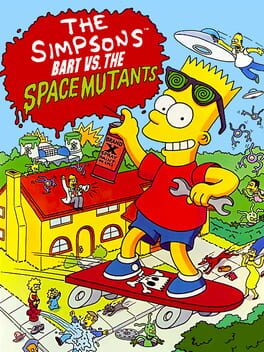
▲
2
▼
In the Amiga, Amstrad, and Atari ST versions of Bart vs. the Space Mutants, Bart wears the blue shirt he had in merchandise around this period during gameplay, but on the title screen and in cutscenes, he wears the red shirt he wears in all other iterations of the game, which is closer to his orange shirt from the show.
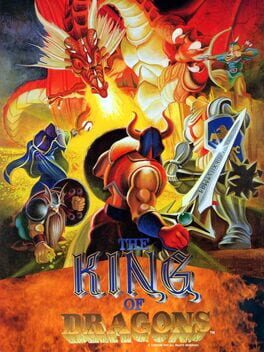
This trivia has been marked as "Not Safe for Work".
It may not be appropriate for all visitors and definitely isn't appropriate for work or school environments.
Click here to unhide it.
It may not be appropriate for all visitors and definitely isn't appropriate for work or school environments.
Click here to unhide it.
▲
2
▼
In-game footage showing the uncensored death in the arcade version:
https://youtu.be/IsM3_h1xav0?t=518
The Cutting Room Floor article:
https://tcrf.net/The_King_of_Dragons_(SNES)
https://youtu.be/IsM3_h1xav0?t=518
The Cutting Room Floor article:
https://tcrf.net/The_King_of_Dragons_(SNES)
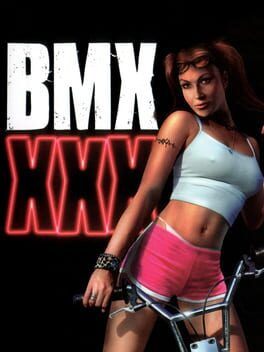
This trivia has been marked as "Not Safe for Work".
It may not be appropriate for all visitors and definitely isn't appropriate for work or school environments.
Click here to unhide it.
It may not be appropriate for all visitors and definitely isn't appropriate for work or school environments.
Click here to unhide it.
▲
2
▼
BMX XXX case insert showcase:
https://www.youtube.com/watch?v=uPz2vEJTpAA
IGN article with different pin-up sizes:
https://www.ign.com/articles/2002/12/13/bmx-xxx-head-to-head
https://www.youtube.com/watch?v=uPz2vEJTpAA
IGN article with different pin-up sizes:
https://www.ign.com/articles/2002/12/13/bmx-xxx-head-to-head
Platform: Sega Mega Drive/Genesis
▲
2
▼
"Blast processing" is a marketing term coined by Sega of America to promote the Sega Genesis as the cooler and more powerful console compared to the SNES. It was such an effective campaign that it caused Nintendo to spend millions of dollars to ramp up their own smear campaign to rebut the claims, helping to create the textbook example of a "console war" between two rivaling video game companies through aggressive marketing and advertising. It is true that Blast processing as presented in advertisements at the time does not exist in any released Genesis game, but its creation was based on a real, low-level progressive processing method that ultimately went unused by developers.
The basic idea is that the hardware's video processor is "blasted" continuously, with the Genesis' 68000 processor working flat-out to change the color of every individual pixel during an active scan, a process where the "guns" on a CRT screen move from left to right and then down to the next line and so on. It was believed at the time that this function could be used to increase the Genesis' somewhat constrained color palette to showcase 256 color static images if timed right (this number would be exceeded by other developers like Jon Burton from Traveller's Tales who later discovered the trick).
Sega of America Senior Producer Scott Bayless claimed that Sega technical director Marty Franz first discovered the trick by "hooking the scan line interrupt and firing off a DMA [direct memory access] at just the right time", as firing it off at the wrong time would result in the scan lines appearing out of phase. This timing/synchronization issue, on top of the more pressing issue of the feature using all of the 68000's CPU time (meaning that while you could run the feature, you couldn't actually play the games that use it), effectively made it useless for cartridge games, and no shipped Genesis games ever used the feature. It’s speculated that it could have been used for Sega CD games, as the add-on had its own CPU that could run the feature, but this also did not come to pass.
The people responsible for the name "Blast processing" are Bayless and Sega of America's PR team. They interviewed him about the specs of the console, and he described to them how the feature could "blast data into the DAC's [digital-to-audio converters]". When talking about how the name came about, he assumed the PR team just liked the word "blast" without understanding what Bayless was explaining, and Blast processing was invented by them to more easily and vaguely sum up the technical capabilities of the Genesis when marketing it. Bayless later expressed reservations about the phrase, calling it "ghastly".
It should also be noted that this feature was not exclusive to the Genesis. In 2020, former Sculptured Software programmer Jeff Peters claimed that they discovered a similar technical trick on the SNES before Sega started using the phrase, but it was focused on audio rather than graphics. He claims that when porting Mortal Kombat to the SNES, Sculptured Software encountered an issue where the amount of graphics data being put onto the cartridge meant that sound had to be cut back drastically. To overcome this problem, Peters and his team used a homegrown system which allowed them to read sounds from the cartridge one at a time and blast them directly to a buffer in the sound memory. While the two tricks were achieving different things, it's interesting to note that both were possible on either console, despite Sega's insistence that only the Genesis could achieve Blast processing.
The basic idea is that the hardware's video processor is "blasted" continuously, with the Genesis' 68000 processor working flat-out to change the color of every individual pixel during an active scan, a process where the "guns" on a CRT screen move from left to right and then down to the next line and so on. It was believed at the time that this function could be used to increase the Genesis' somewhat constrained color palette to showcase 256 color static images if timed right (this number would be exceeded by other developers like Jon Burton from Traveller's Tales who later discovered the trick).
Sega of America Senior Producer Scott Bayless claimed that Sega technical director Marty Franz first discovered the trick by "hooking the scan line interrupt and firing off a DMA [direct memory access] at just the right time", as firing it off at the wrong time would result in the scan lines appearing out of phase. This timing/synchronization issue, on top of the more pressing issue of the feature using all of the 68000's CPU time (meaning that while you could run the feature, you couldn't actually play the games that use it), effectively made it useless for cartridge games, and no shipped Genesis games ever used the feature. It’s speculated that it could have been used for Sega CD games, as the add-on had its own CPU that could run the feature, but this also did not come to pass.
The people responsible for the name "Blast processing" are Bayless and Sega of America's PR team. They interviewed him about the specs of the console, and he described to them how the feature could "blast data into the DAC's [digital-to-audio converters]". When talking about how the name came about, he assumed the PR team just liked the word "blast" without understanding what Bayless was explaining, and Blast processing was invented by them to more easily and vaguely sum up the technical capabilities of the Genesis when marketing it. Bayless later expressed reservations about the phrase, calling it "ghastly".
It should also be noted that this feature was not exclusive to the Genesis. In 2020, former Sculptured Software programmer Jeff Peters claimed that they discovered a similar technical trick on the SNES before Sega started using the phrase, but it was focused on audio rather than graphics. He claims that when porting Mortal Kombat to the SNES, Sculptured Software encountered an issue where the amount of graphics data being put onto the cartridge meant that sound had to be cut back drastically. To overcome this problem, Peters and his team used a homegrown system which allowed them to read sounds from the cartridge one at a time and blast them directly to a buffer in the sound memory. While the two tricks were achieving different things, it's interesting to note that both were possible on either console, despite Sega's insistence that only the Genesis could achieve Blast processing.
https://www.eurogamer.net/digitalfoundry-2019-blast-processing-retro-analysis
https://www.youtube.com/watch?v=o8qgArSqMsc
https://www.timeextension.com/news/2022/09/the-man-behind-segas-blast-processing-gimmick-is-sorry-for-creating-that-ghastly-phrase
https://www.nintendolife.com/news/2020/05/segas_blast_processing_we_did_it_on_the_snes_first_says_former_sculptured_software_dev
https://www.youtube.com/watch?v=o8qgArSqMsc
https://www.timeextension.com/news/2022/09/the-man-behind-segas-blast-processing-gimmick-is-sorry-for-creating-that-ghastly-phrase
https://www.nintendolife.com/news/2020/05/segas_blast_processing_we_did_it_on_the_snes_first_says_former_sculptured_software_dev
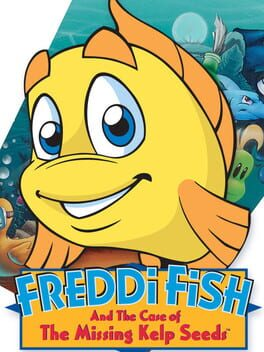
subdirectory_arrow_right Spy Fox in "Dry Cereal" (Game), Pajama Sam In: No Need to Hide When It's Dark Outside (Game), Majesco Entertainment (Company), ScummVM Team (Company)
▲
2
▼
Pajama Sam: No Need to Hide When It's Dark Outside and Freddi Fish and the Case of the Missing Kelp Seeds were released on the Wii as Pajama Sam: Don’t Fear the Dark and Freddi Fish: Kelp Seed Mystery respectively, alongside Spy Fox: Dry Cereal, which kept its name. However, these ports ran off of the ScummVM emulator engine and did not use proper attribution, leading to all unsold copies of the games being removed from sale and destroyed, and mandatory donations being made to the Free Software Foundation.
Platform: Sega Mega Drive/Genesis
▲
2
▼
According to a 1998 interview with Sega R&D head Hideki Sato published in The History of SEGA Console Hardware, the Mega Drive's design from Japan was based on the audio player's appearance, and presented the "16-bit" label embossed with a golden metallic veneer to give it an impact of power:
"We had a feeling that before long, consumers would be appreciating video games with the same sense with which they enjoyed music; moreover, since the Megadrive was a machine that you put in front of your TV, our concept was to make it look like an audio player. So we painted the body black and put the “16BIT” lettering in a gold print. That gold printing, by the way, was very expensive. (laughs) But we really wanted to play up the fact that this was the very first 16-bit home console."
"We had a feeling that before long, consumers would be appreciating video games with the same sense with which they enjoyed music; moreover, since the Megadrive was a machine that you put in front of your TV, our concept was to make it look like an audio player. So we painted the body black and put the “16BIT” lettering in a gold print. That gold printing, by the way, was very expensive. (laughs) But we really wanted to play up the fact that this was the very first 16-bit home console."
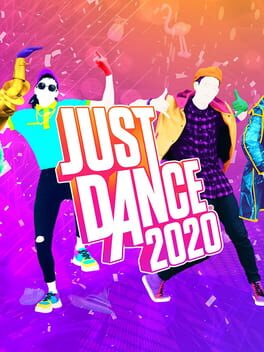
▲
2
▼
The announcement of a Wii version of Just Dance 2020 was met with confusion from some fans as to why an eighth generation game would be released on a discontinued console, speculating that it was because hospitals and rehabilitation centers still used the Wii for physical therapy and recreation, with Just Dance being a popular series for those purposes. However, Ubisoft released an official statement in response to the speculation that claimed that "it would be inaccurate to say that Just Dance is available on the Wii solely because it’s developed for physical therapy purposes" and that "a lot of our players are children and families who continue to play on Wii."
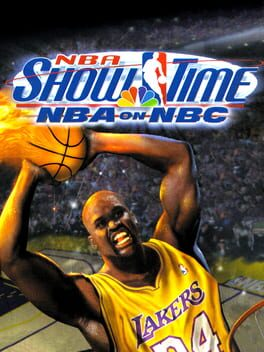
▲
2
▼
The Nintendo 64 and Dreamcast versions of NBA Showtime: NBA on NBC contain secret text in their code that some may find to humorously juxtapose one another.
•The Nintendo 64 version contains the text "An Alan Smithee Game", referring to a pseudonym used by filmmakers to disown a project they don't want to be associated with.
•The Dreamcast version contains the text "Joe Rules", likely a signature referring to either programmer Joe Barnes, artist Joe Williamson, or both.
•The Nintendo 64 version contains the text "An Alan Smithee Game", referring to a pseudonym used by filmmakers to disown a project they don't want to be associated with.
•The Dreamcast version contains the text "Joe Rules", likely a signature referring to either programmer Joe Barnes, artist Joe Williamson, or both.
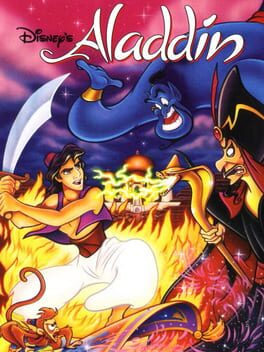
subdirectory_arrow_right Disney's Aladdin (Game)
▲
2
▼
A long-standing debate exists over which of the two Aladdin ports - one for SNES made by Capcom and one for Sega Genesis made by Virgin Games - is actually the better version. Game designer Shinji Mikami, who made the SNES version, actually claims the Genesis port is better:
Mikami cites other problems for the SNES port besides the lack of bladed weapons. The cover art also did not include the "Genie" character, who is the most iconic member of the cast. This upset a lot of fans of the movie. Mikami said:
According to Polygon and game director Dave Perry, who created the Genesis port of the game, the lack of Genie on the front cover could have had something to do with actor Robin Williams and his annoyance at the way Disney was using his character's likeness in promotional materials, such as video games:
Dave Perry was happy to hear about how Shinji Mikami felt about his port of the game. Ironically, his opinion was opposite of Mikami's about both Aladdin games:
"If I didn't actually make [the SNES game], I would probably buy the Genesis one. Animation-wise, I think the Genesis version's better. The Genesis version had a sword, actually. I wanted to have a sword."
Mikami cites other problems for the SNES port besides the lack of bladed weapons. The cover art also did not include the "Genie" character, who is the most iconic member of the cast. This upset a lot of fans of the movie. Mikami said:
"Originally, the front of the Super Famicom package had a genie on it. Disney said no to that, so we had to move the genie to the back of the package in a smaller size. But the Sega version, they had the genie on the front."
According to Polygon and game director Dave Perry, who created the Genesis port of the game, the lack of Genie on the front cover could have had something to do with actor Robin Williams and his annoyance at the way Disney was using his character's likeness in promotional materials, such as video games:
"That put the use of the Genie as 'sensitive' during those discussions."
Dave Perry was happy to hear about how Shinji Mikami felt about his port of the game. Ironically, his opinion was opposite of Mikami's about both Aladdin games:
"I'm really biased as we made the original game and got Disney to deliver the animation. So I'd flip the quote, 'If I didn't actually make the Genesis version I'd probably buy the SNES one'."
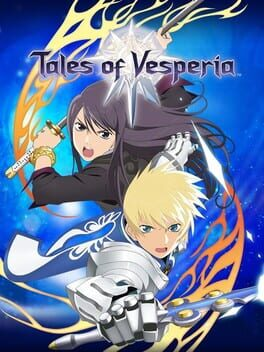
subdirectory_arrow_right Tales of Vesperia (Game)
▲
2
▼
If the player uses Rita's Thunder Blade spell against Time Traveler/Dhaos when his health is below half during the Coliseum 200 man battle, Rita will instead perform Indignation and finish him off instantly. This references the intro of Dhaos' home game Tales of Phantasia, where said spell forced Dhaos into retreat. Rita will also be able to use Indignation freely from that point onward. This only applies to the PlayStation 3 version of the game.
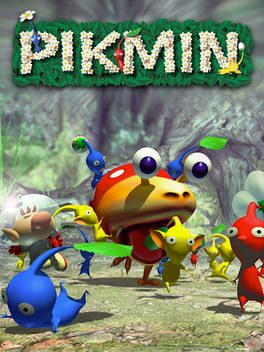
▲
2
▼
The Gamecube disc for Pikmin actually contains a Windows executable file. When run on a computer, the game will launch in a very glitchy state. In the game's debug menu is a mode titled "Game-Mode". Enabling this mode will fix several issues.

▲
2
▼
 After you find Cloud in the hospital after he falls in the Lifestream, he will mumble incoherent things when you speak to him. One of the things he mumbles is "zeno... gias..." This is a translation error and a reference to the game Xenogears. In the PC port of Final Fantasy VII, the spelling is corrected to "Xeno... gears".
After you find Cloud in the hospital after he falls in the Lifestream, he will mumble incoherent things when you speak to him. One of the things he mumbles is "zeno... gias..." This is a translation error and a reference to the game Xenogears. In the PC port of Final Fantasy VII, the spelling is corrected to "Xeno... gears".Cloud also says "A billion mirror fragments.... small.... light..." which is a reference to the vocal song of Xenogears, Small Two of Pieces. One of the lines to the song is "Broken mirror, a million shades of light".
Franchise: Ace Attorney
▲
2
▼
The first 3 games in this series were released on the GBA, only in Japan. When the first game was ported to the Nintendo DS, a new case was added. This case caused a continuity error in the second game, when the original last case of the first game was said to be Edgeworth's last case. This was corrected in Phoenix Wright: Ace Attorney Trilogy, which updated some of the lines of dialogue to fit the new case into the series timeline. Specifically:
• "(But after "that" case was over...)" became "(But a little after "that" case was over...)"
• "After that case, Edgeworth was in a peculiar state, and he got worse everyday." became "Edgeworth was never quite the same after that case, and then, with the case after that one..."
• "That was one year ago. It was right after you left to go back home." became "That was one year ago. It was a few months after you left to go back home."
• "(But after "that" case was over...)" became "(But a little after "that" case was over...)"
• "After that case, Edgeworth was in a peculiar state, and he got worse everyday." became "Edgeworth was never quite the same after that case, and then, with the case after that one..."
• "That was one year ago. It was right after you left to go back home." became "That was one year ago. It was a few months after you left to go back home."





